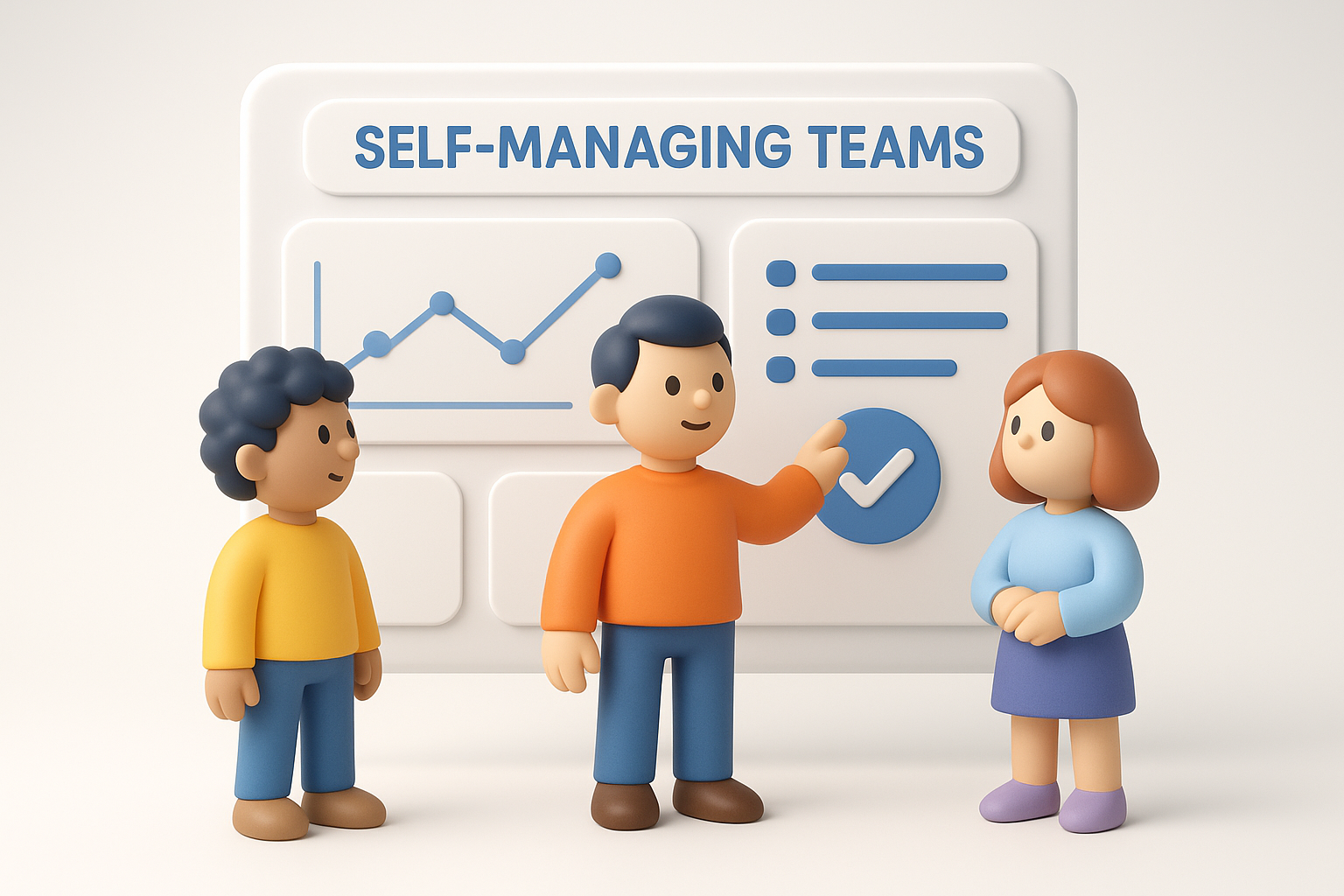
Click the button to start reading
How To Ensure Successful Project Implementation In The Workplace
Project implementations rarely go as planned, but the process can be built to maintain positive and focused momentum even in the face of various obstacles when there is a solid system in place.
Something always seems to come up in the process (whether internally within the team or with external clients) that requires the relevant parties to reexamine their current strategy in order to continue to deliver on the organization’s objectives. As important as it is to plan a project thoroughly and apply effective project management techniques from the beginning, it’s equally as valuable to ensure the project’s implementation process is given as much comprehensive review and attention.
According to the Pulse of the Profession 2020, 11.4% of investment is wasted due to poor project implementation. There’s much at stake when it comes to achieving the company’s overall goals, so it’s vital that we understand the basics of project implementation, why it’s important in the workplace, and how we can achieve success in our own processes.

What Is Project Implementation?
Project implementation is the last stage of project management that comes after understanding a company’s vision, ultimate end goal of an assigned project, budget, timelines, and subsequent brainstorming of ideas that will help bring it into reality. Implementation comes directly after the planning phase and is supported by a project manager (PM). The distinction, however, is that this is the stage where the PM allows the team to carry out the objectives of the project but is still readily available for extra guidance, clarity, and problem-solving from beginning to end. The PM takes a step back, tracks the progress of the project, monitors for scope creep, presents deliverables to external clients, and anticipates any disruption to the workflow.
Project implementation requires a heavy amount of coordination between the PM and the various team members to define and set priorities. Once a plan for project implementation has been realized, the team then sets out to accomplish the different milestones of the project. For example, once the PM has created and outlined a particular assignment, they then assess the various resources they’ll need in order to be successful.
- The team is clearly identified – All relevant team members know they’re assigned to the project and understand their role and deadlines.
- A platform used to track milestones – Once the project kicks off, the PM will monitor the progress and ensure that deadlines are met by all members of the group.
- The team starts to accomplish goals – Each team member is responsible for a particular piece of the project’s objectives. Once they have completed their assignment, they can then use the platform to mark their assignment as “complete” or notify the PM and the rest of the team in the appropriate communication channels. Then, the next team member can move forward with their respective part. Using an example with a group of writers and editors, the editor must wait until the writer has a deliverable ready to be edited. Thus, the writer must complete their own task by the assigned deadline, confirm that it’s ready for the editor to review, and finally, the editor can then move forward with their edits and notify the PM when complete. Of course, as various teams in different fields will have unique needs, this process can be customized to best fit particular workflow processes in any given profession.
- Deliverable is ready – Once the team has accomplished each and every milestone of the project, the PM is ready to deliver the finished project to the client. Any feedback given by the client goes directly back to the team to review.
- Adjustments are made – As with all projects, adjustments may be needed to accommodate the demands of the organization’s clients. This is a regular occurrence any project manager will need to be able to anticipate and handle accordingly in collaboration with leadership and with insightful feedback from the team on the capacity to make it happen. Sometimes, changes to the established processes in order to deliver a high-quality outcome may be necessary, but it takes considerable organizational skills to align the team and clarify any distinct needs. This is also an opportunity for the team as a unit to define their boundaries if the requests become unrealistic.

The Importance of Project Implementation
Think of project implementation as a bridge: it carries the team through planning and execution to the final destination. If the goal of an organization is to produce results that leave its customers satisfied, then the structure of its project implementation (and methods used for effective project management in general and collective team knowledge) will ultimately determine its success.
Project implementation is important for a few reasons:
- Keeps the project moving forward – It can be easy for a project to slow down drastically during different stages (whether that would be in the planning or execution), which can result in difficult setbacks and internal delays. Project implementation relies heavily on the pillars of project management, as these can act as blueprints to building the most effective process that keeps the team moving along. During project implementation, there is no question about who is responsible for what task. The relevant deadlines are accessible to everyone and the goal of the project is clearly defined from the beginning. There are regularly scheduled meetings that help support the team in achieving this goal and act as additional opportunities for further team alignment. The team can ask pointed questions or bring up issues encountered along the way, which can help keep the team on the same page. And if a meeting isn’t needed, the PM, along with leadership, can make the determination to skip or cancel the meeting until it’s needed so that the team can regain some valuable time. These factors keep the momentum steadily focused, which the PM further supports by tracking every aspect of the project including any client feedback.

- Ensures the team is consistently hitting reasonable deadlines – Reasonable deadlines help the team feel less stressed or pressured, which can give them the room they need to perform successfully. One of the most essential aspects of a PM’s job is to make sure deadlines are achievable and realistic. Accelerated timelines need to be directly addressed with the team so that details such as capacity, workload, and availability can be taken into account before the PM finalizes the overall plan for the project. Once these criteria are met, the PM then monitors the progress of the project, checking in occasionally with any of the relevant team members on upcoming deadlines, and adjusting if any unexpected delays come up which require adjustments to the timeline. Different platforms can help keep track of this. PMs can see what’s on track, what’s in danger of falling behind, and what deadlines are being missed.
- Help keep the project within the organization’s budget – With established deadlines and timelines, the project remains within a designated budget. Any unnecessary or unexpected delays can cause the organization to go over its budget for that specific project. To ensure successful project implementation, it’s essential to have control of the budgeting strategy and have this piece of project management under control. This is especially true now with the impact the COVID-19 pandemic has had on the workforce. Most organizations have had to restructure and build contingencies into many of their processes to account for various changing factors such as the cost of labor or resources and how it impacts their budgets. A good PM prepares for any changes including anticipating increasing costs.
- Unites the team through a collaborated effort – To achieve project success, the team needs to work together in a concerted effort to meet the goals of their assigned task. Since the group will need to rely on each other in order to do their own respective part of the project, this creates a sense of unity as everyone is working towards the same goal. The health of the project relies heavily on the people involved. If they’re working together seamlessly, collaborating and problem-solving together, the more likely the project will find great success.
- Creates control over the project’s many needs – The planning stage of project management builds a workflow process that the team can easily follow. When the project is being implemented, the team is carrying out the actions needed in order to reach a successful end result. Without a proper outline of the next steps and individual responsibilities, the project will likely be subject to many distractions, delays, and internal confusion (as well as frustration) about the process of getting their work done. Not to mention, the client may not receive the result they were looking for. Every project has different needs. Capturing this during the planning stage and following through in execution will help build a sense of control the team has over the process and intended outcomes. If certain expectations can’t be met, the team can identify, discuss, and propose a solution for matters that need a more delicate hand.
- Builds trust within the team – When a project is going well, and everyone is delivering on their timelines with minimal cause for review or revision, the team will start to trust each other’s capabilities and skills. This makes it easier for the team to work together seamlessly, motivated by each other to get things done. Trust is an important aspect of a positive workplace environment. The more the team feels inspired by each other, the more likely they will be able to adapt to unique scenarios, deliver high-quality work, and effectively problem-solve together quickly.
- Fosters transparency in the workplace – Since the project is easily accessible to everyone involved, the team can easily see each stage. They can proactively review the timeline/deadline(s) and see how everything comes together. This limits the number of questions the team may have as they have everything they need in one place. Project implementation allows for transparency in important workflow processes and allows the team to feel more comfortable with the organization, building their trust and feeling more motivated to contribute. A lack of transparency with any workplace procedures causes an increased amount of internal strife, as many of the team will be frustrated without a clear path forward.
To avoid any pitfalls that may arise during project implementation, let’s talk about what you can do to achieve success in your own internal workflow processes.

How to Achieve Project Success
Project implementation sounds complicated, but it doesn’t have to be! There are simple, practical ways to make this process easier for you so everyone on the team feels equally prepared to deliver on their assigned tasks.
Here’s what you can do to achieve project success:
- Have the right people in leadership roles – It’s vital to project implementation that you have the right managers/leaders involved in your project. There will be moments where the team will need specific buy-in from the team’s leads (not always the PM), especially if an issue were to come up during the process. Leaders need to have the right skillset – a balance of both technical and soft skills, to manage their teams and course-correct if needed. Without an effective leader to spearhead the project, the team will feel disjointed, the project could be subject to critical mistakes, and essential decisions may be delayed. The team lead(s) should also foster a sense of camaraderie, compassion, and genuine interest in everyone’s success so that everyone feels supported during the project implementation phase.
- Compile the superstar team – This is all about having the right people in the right seats. You need to choose the individuals carefully, their skillset being a defining factor. Eliminate anyone not needing to be part of the process, just the core team who will facilitate all the actions from beginning to end. A project’s success relies heavily on the people involved. When the right people are in their respective roles, the process goes faster, everyone operates productively, and the result of their efforts can be truly innovative and beneficial to the organization.
- Always seek feedback – The process must be built to accommodate various check-in points and feedback requests. This ensures that established processes still make sense or if specific workflows need to be adjusted to accommodate unique needs. Feedback reveals valuable insights and how many of the team members may be feeling. For example, if the PM notices that a certain project is not meeting important milestones, the team will need an opportunity to reflect on the current process and what is and is not working. The PM and leadership can then make decisions on the next steps in order to get back on track.
- Create an effective schedule for monitoring progress – Having an inclusive schedule that everyone has access to which also encompasses project milestones and check-in meetings is important when it comes to monitoring the progress of a project. This keeps everyone on track and moving along steadily. The key is to remain flexible, not rigid in your scheduling. If certain dates need to be moved, then the timeline you’ve to build should have breathing room for unexpected adjustments.

- Celebrate wins and encourage accountability – When individuals on a team are successful, recognize and celebrate wins (no matter how small). Leaders giving out shout-outs or kudos in meetings or designated communication channels is a good way for the team to feel appreciated for all their contributions and hard work. This keeps everyone motivated to keep going, even when the given circumstances may not be easy. A team’s positive, buzzing energy is another important variable when it comes to achieving project success.
- Schedule regular client check-ins – Client check-in calls, or otherwise known as feedback calls, can help keep the team aligned with the overall objectives of the project, stay up-to-date on expectations, and remedy any miscommunication that comes up during the lifecycle of the project. This is a sincere way of ensuring that the team is hitting the mark and on its way to delivering a successful result for their client. Not all members of the team need to be present on the call. It can even be recorded for others to review at a later time, but it’s nevertheless a resource that the whole team can use when a refresher (or further inspiration) is needed.
In Conclusion
Successful project implementation requires a solid foundation in order to have the best outcomes. Effective project management techniques in the planning stage can ensure that the team achieves project success.
Giving everyone clarity, transparency, and consistency in the workflow process can help keep the team aligned and moving forward.
















